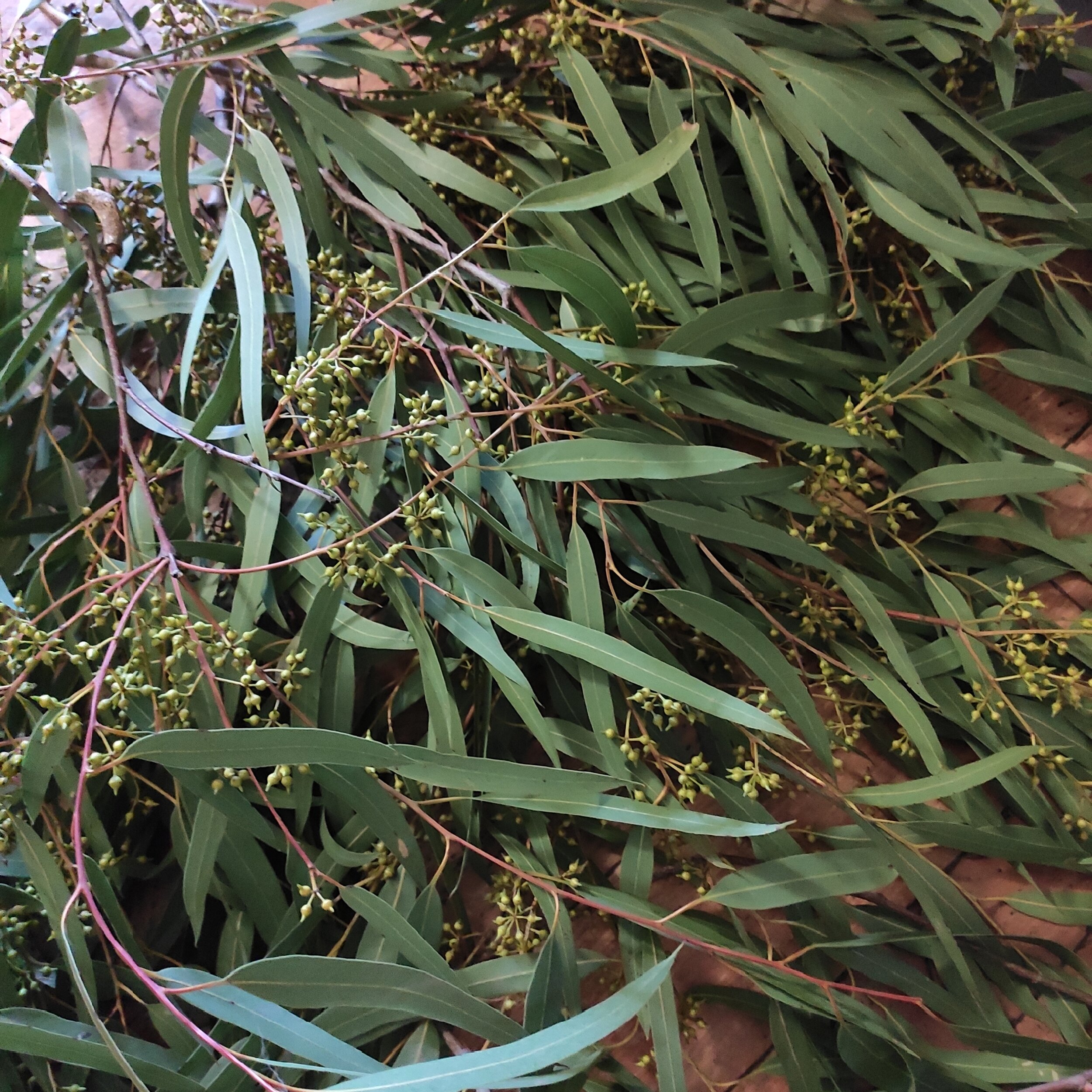Eucalyptus camaldulensis
For our first investigation we were to make a dye pot with whatever leaves we could find, preferably eucalyptus but anything would do for those who didn’t have easy access to eucalypts. I found a fallen branch near this tree, it was in a park within the 5km radius (lockdown restrictions) to my home.
I spent my birthday this year in stage 4 lockdown thanks to the Covid19 pandemic, to lift my spirits I treated myself to an eco printing course called Eucalyptographia run by India Flint. It is a fascinating course and I was very eager to get going.
-
March 2023
- Mar 17, 2023 Pain By Numbers - fibre minis Mar 17, 2023
- Mar 11, 2023 Burstling - the making of a pattern and yarn kit Mar 11, 2023
-
January 2023
- Jan 16, 2023 Yarn over Yarn and Kai Fella Sweater Jan 16, 2023
-
October 2022
- Oct 3, 2022 Fibre Focus - Cheviot Oct 3, 2022
-
September 2022
- Sep 11, 2022 A woven scarf and some thoughts on bamboo fibre Sep 11, 2022
-
July 2022
- Jul 31, 2022 Double Width Weave Jul 31, 2022
-
November 2021
- Nov 26, 2021 Fibre Arts Friday Nov 26, 2021
- Nov 5, 2021 Fibre Arts Friday - one stitch at a time Nov 5, 2021
-
October 2021
- Oct 29, 2021 Fibre Arts Friday - crafting through crisis Oct 29, 2021
- Oct 22, 2021 Fibre Arts Friday Resurrection Oct 22, 2021
-
November 2020
- Nov 4, 2020 Eucalyptographia homework Nov 4, 2020
-
September 2020
- Sep 24, 2020 Eucalyptus camaldulensis Sep 24, 2020
-
August 2020
- Aug 1, 2020 What’s in a mask? Aug 1, 2020
-
July 2020
- Jul 16, 2020 The many faces of Khal Drogo Jul 16, 2020
- Jul 6, 2020 A tale of “two lochs” Jul 6, 2020
- Jul 3, 2020 The Big Wool Show is coming… Jul 3, 2020
One of the hardest things I found from my experiences with eucalyptus is the identification. There are said to be around 900 species of eucalypts that have been identified and they come in all sizes and shapes… one would think with the easy access to information in the 21st century this task would be easy. The problem is, with easy access there is also abundant misinformation. Try search any eucalyptus names you know you will see what I mean. One of the more authoritative sources is EUCLID, a database run by the Centre for Australian National Biodiversity Research. It is arguably the most comprehensive and most up-to-date encyclopaedia of Eucalypts.
Anyway my search on EUCID and other internet searches led me to believe that what I had gathered came from Eucalyptus camaldulensis, or river red gum.
First investigation samples (1)
un scoured vs. scoured - not much difference
The squares are handwoven with merino and silk noi yarn, the bands on top are also handwoven, suri alpaca (wide) and hemp (narrow), the stitches are made with cotton thread.
All are handspun by me.
Although the river red gum is definitely an Australian native, it was named after a monastery in Tuscany, central Italy.
Incidentally among the recommended readings from my course was a book called Eucalyptus by Murray Bail, and in this book there was a story about E. Camaldulensis: that some river red gum nuts were inadvertently brought to the gardens of Camaldoli and then dropped, quite by accident, that had then taken roots and grew into big gum trees.
First investigation samples (2)
From left to right
cotton
hemp
suri alpaca
merino and silk noi
All handspun
Of course that was fiction. In fact, it was named by a distinguished Italian gardener/landscaper Frederick Denhardt, who propagated some river red gums from the seeds sent to him by Allan Cunningham, a King’s Botanist in New South Wales. Denhardt later named these gums Eucalyptus camaldulensis, after the Camaldolese Hermitage where the gums were planted. Unfortunately these gum trees were cut down in the early 1920s for reasons unknown. A sad loss.
First investigation samples (3)
Australian merino tops
used for exhausting the dye pot
You can see from my samples that it produced some rich colours on protein fibres but less so on cellulose fibres, this could be due to that scouring was only done following the process for protein fibres for simplicity in this exercise. Nonetheless I really like the rich brown tones in the alpaca and merino/silk, the photos don’t do them justice. I was able to completely exhaust the dye pot with the final merino tops.
p.s. be careful when you are around a river red gum, it is known for dropping big boughs, hence the colloquial name “the widow maker” 🙃





